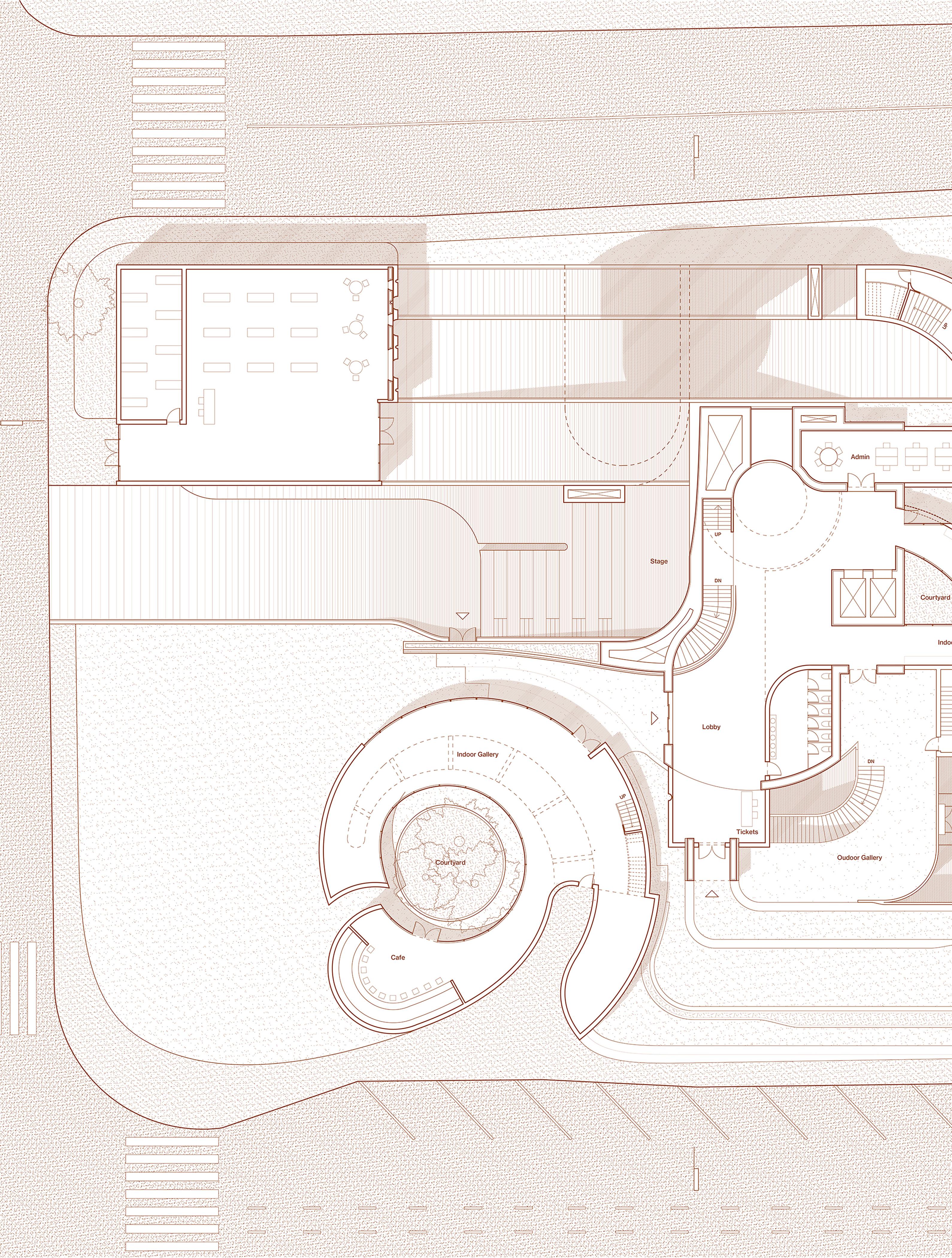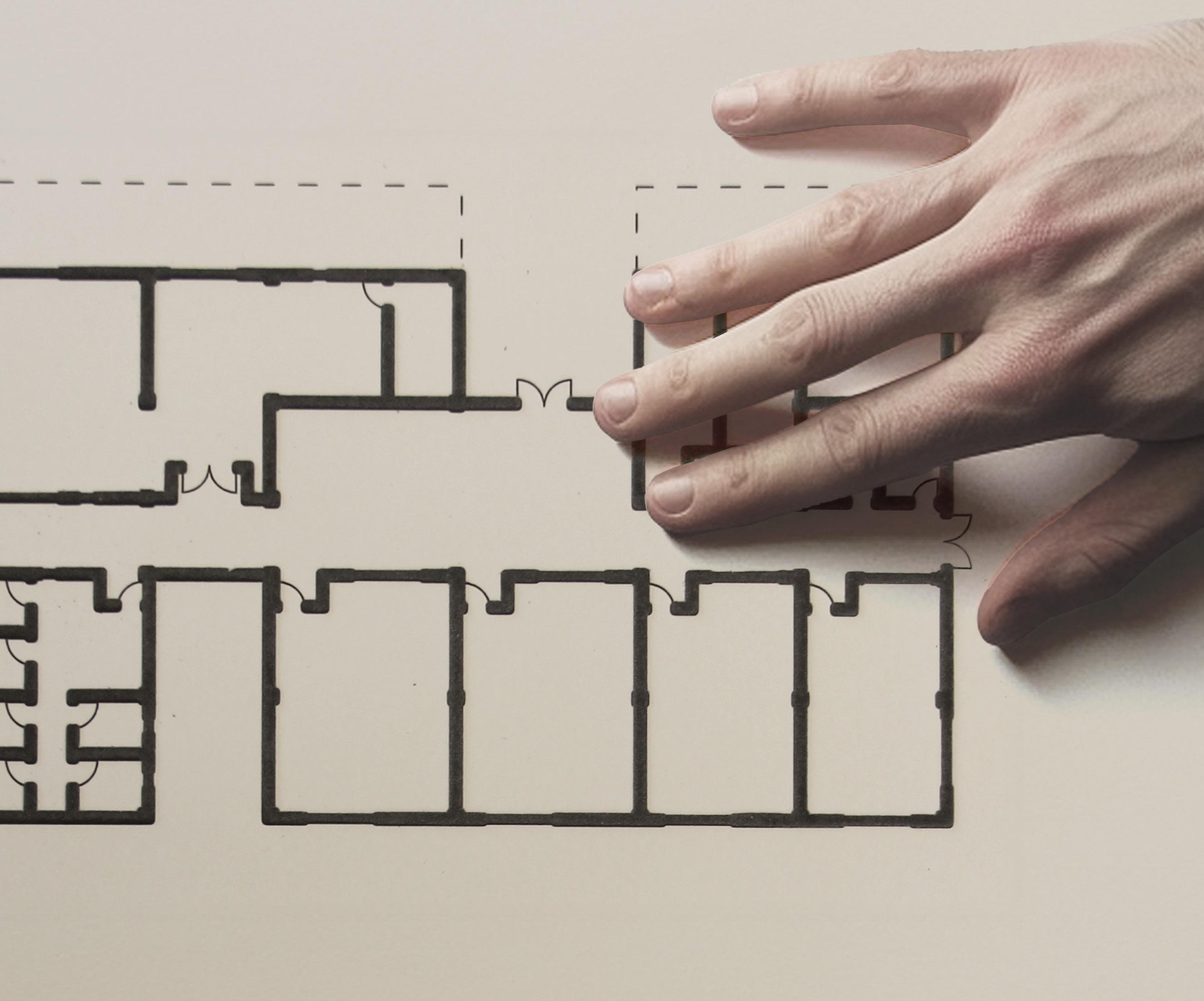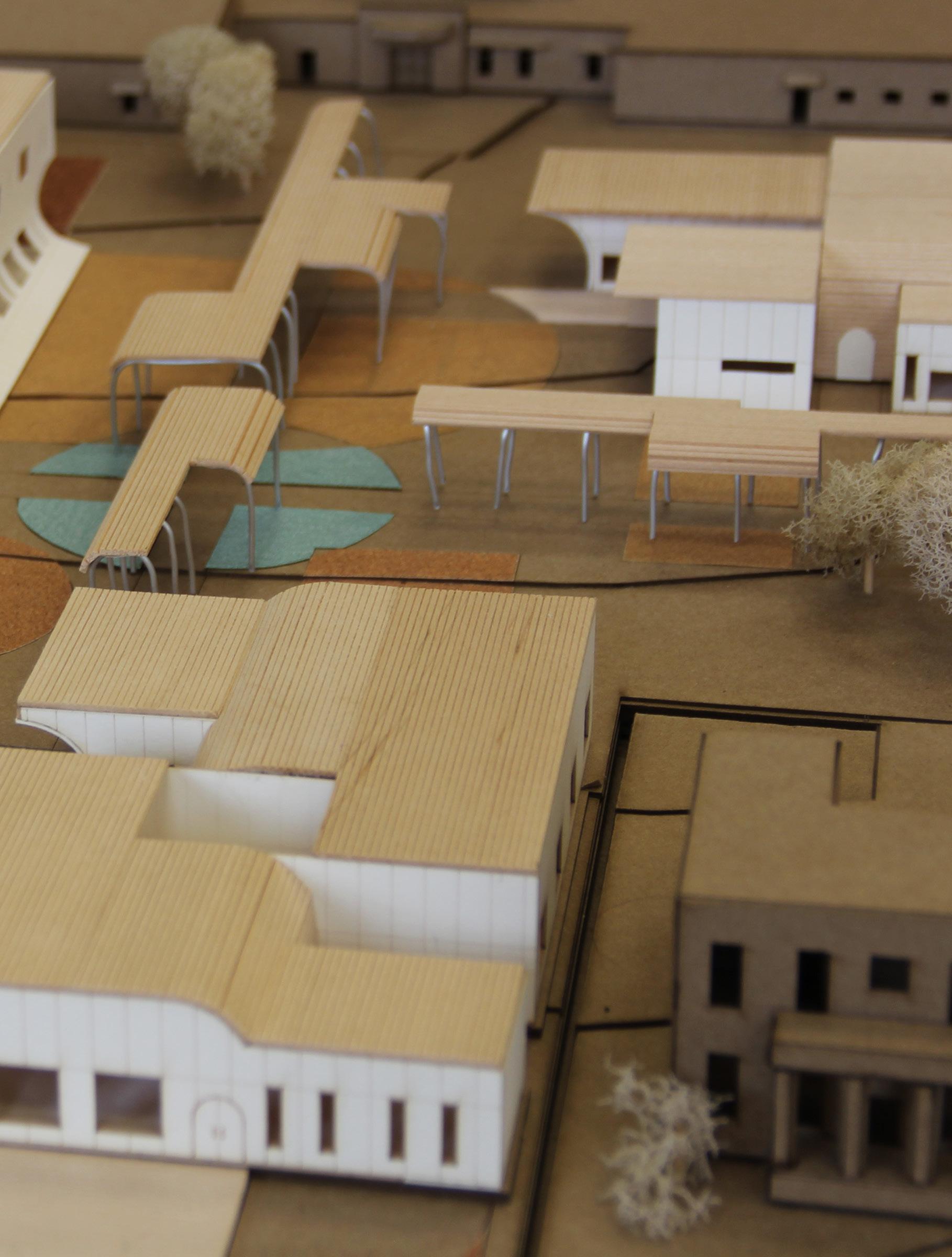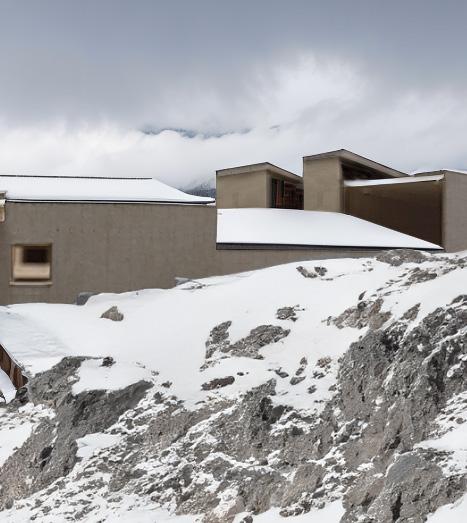






spring 2022 | design excellence recipient | collaboration with Anisha Kamat
The design of The Reverie began with a radical construction system that takes the ordinary method of widening a column towards the base and fractures it. Rather than thick, obtrusive columns that disrupt and disturb, the delicate columns in this tower fracture and multiply, compelling you to rethink what defines a room and how to navigate in and around them.
Where typical walls are definitively rigid, these walls dance around columns and furniture. Unbounded by normative room planning, walls grow from the floor and ceiling, creating a new level of freedom in interior expression. Just like a Dali painting, surfaces and furniture become sculptural; objects occupying space in an abstract landscape.


The modern tower is a complex combination of systems that are impossible to coordinate due to their extensive scale. These include a robust structural system and circulation core, heating and cooling, and return & supply ductwork. Eventually, due to the overlap of everyday construction techniques with antiquated room layouts, there are bound to be conflicts between all these systems. These modern conflicts become surreal in their own right, but unfortunately dysfunctional.





an exquisite corpse
An Exquisite Corpse is a method by which a collection of words or images is collectively assempled. This method gained popularity in artistic circles during the 1920s, adopted by artists of the Surrealist movement to generate collaborative compositions












An inescapable reality of realizing buildings is the assembly of parts, true from the scale of a handrail to a building's massing. Puzzling Assemblies began by using complex 3-dimensional puzzles to explore an assembly that defies immediate understanding, provoking intense engagement with the nuances of their geometric qualities.
Following an investigation of the dialogue between these parts and their assembly, these geometries assumed building-scale, upsetting the typical method of moving from large to small. Here disassembly became an agent for exploring sectional relationships.


AI image generation

nested mass mass encased by surrounding pieces
core that the pieces operate around
hints at the operation through negative space left behind
central cavity "bullet" form notching
suggestion of where pieces start and stop
seams
continuity and alignments hint at operation of pieces

translation "interlocking", "operating", "rotation", "cylinder"
copper composite PLA, finished with outdoor primer
3DAs the object began to disassemble, the impact that the methods of disassembly would have on the site became apparent. As the object descended, revolved, and expanded into the site, these geometries carved into the ground, nestling themselves in the landscape.
Although most of the original pieces were reoriented horizontally, the piece entitled the "crown" remained in a vertical orientation, creating tension between plan and section and marrying the groundscape with its new foreign object.




The building is organized along the northsouth axes with key galleries flanking the entry threshold as well as the central lobby space. Circulation along this axis alternates between compression and expansion as one is thrust into the "heart".
This central double-height atrium is enveloped and disguised by the surrounding pieces , and simultaneously houses a grand spiral staircase that serves as the connection device between indoor and outdoor, above and below.
copper composite PLA and white PLA sanded to a smooth finish




fall 2022 | design excellence recipient | collaboration with Ryan Fagrie
This intervention for a high-speed rail station fragments the vernacular train shed to evoke its historical formal language, while bringing clarity to a notoriously disorienting typology. As an experiment in navigation, the station's design maximizes agency for the visually-impaired user. Circulation was established by laying out an explicit tactile path that organizes space along an intended trajectory. Only after navigation was resolved were the doublecatenary masonry vaults placed, defining program and creating a series of discrete experiences. With the capacity to multiply as the station expands, the system of vaults are oriented based on respective program. The variation in scale and daylighting for each vault allows users to rely on more than just vision to navigate.





The entry vaults were splayed to facilitate two separate experiences: one for those who show up two minutes before their train leaves where there is a clear path to the platform, and a separate experience for those who show up early, where a conscious decision is made to turn away from the platforms, engaging with the program vaults.




The tactile path remains as a unifying tool to guide navigation. Junctions are minimized for clarity and serve as identifiable landmarks.





fall 2021 | Comprehensive Studio | collaboration with Genesis Gadberry
This studio introduces and examines the entire design process, from site studies and schematic design, to final construction documents, working closely with the local Texas School for the Blind and Visually Impaired to create a mixed-use/residential addition to their campus.
Initial site visits and program studies highlighted the unique community of blind students that would utilize this facility, As this project is designed to provide housing for students exiting the school, extensive research was conducted to understand the nuances of visually-impaired life. Additionally, this project is located on a prominent corner in the neighborhood so the final design creates an intersection point for the local community to engage with the school.


Typically limited to 2D representation, even conventional drawings such as floor plans and sections were printed on specially designed, swell ink paper that would enable people with visual impairment to experience architectural representation and engage in technical documentation.

floor plan printed on swell ink

laminated timber structural framing
This project is also an investigation into mass timber as a structural system. Concrete panels comprise a majority of the exterior walls with the exception being when the roof of wooden slats curve to meet the ground. With mass timber as a device to facilitate this formal move, the overall materiality of the project can be experienced through touch.
fiberglass concrete panel exterior cladding
glue accoya wood slats exterior cladding
curved wall/roof detail

floor to wall connection detail


roof drain detail

flat roof detail

foundation detail curved wall base detail




spring 2021
Initial program study investigated the needs of glaciology and archaeology workers who will be conducting research within the difficult climate and terrain of the Tyrolean Alps. The final project is a dual research center analyzing the effect of the anthropocene. Similar to the dual focus on glaciology and archaeology, there is a simultaneous focus on the past and future, considering the vernacular of Tyrol as well as the continual erosion of the surrounding landscape.






winter solstice summer solstice daylight: 15:54 hrs daylight: 8:30 hrs sunset: sunset: sunrise: sunrise: 19:15 15:29 03:21 06:59

archaeology storage
archaeology lab

winter room garage






spring 2022 | collaboration with Tyler Koraleski
This project served as an exploration into the capabilities of the KUKA robot in material fabrication. The path and rotation of the robot arm was coded using Grasshopper to machine a system of diagonal grooves that would allow pieces to interlock with one another. After production, exercises were conducted with the fabricated pieces to imagine an architectural environment with the machined forms.





